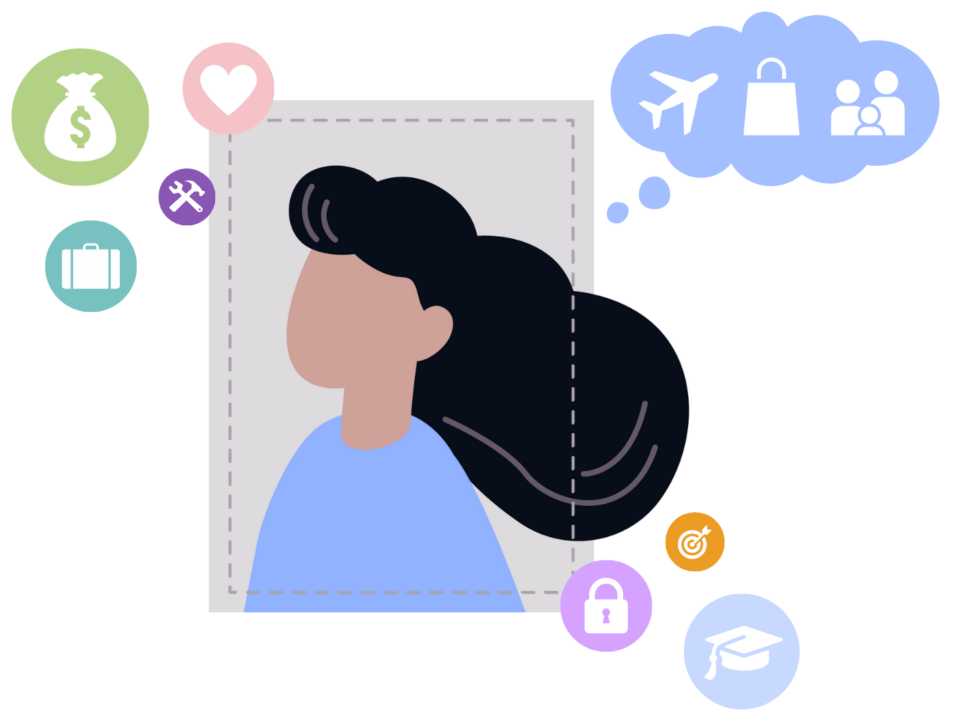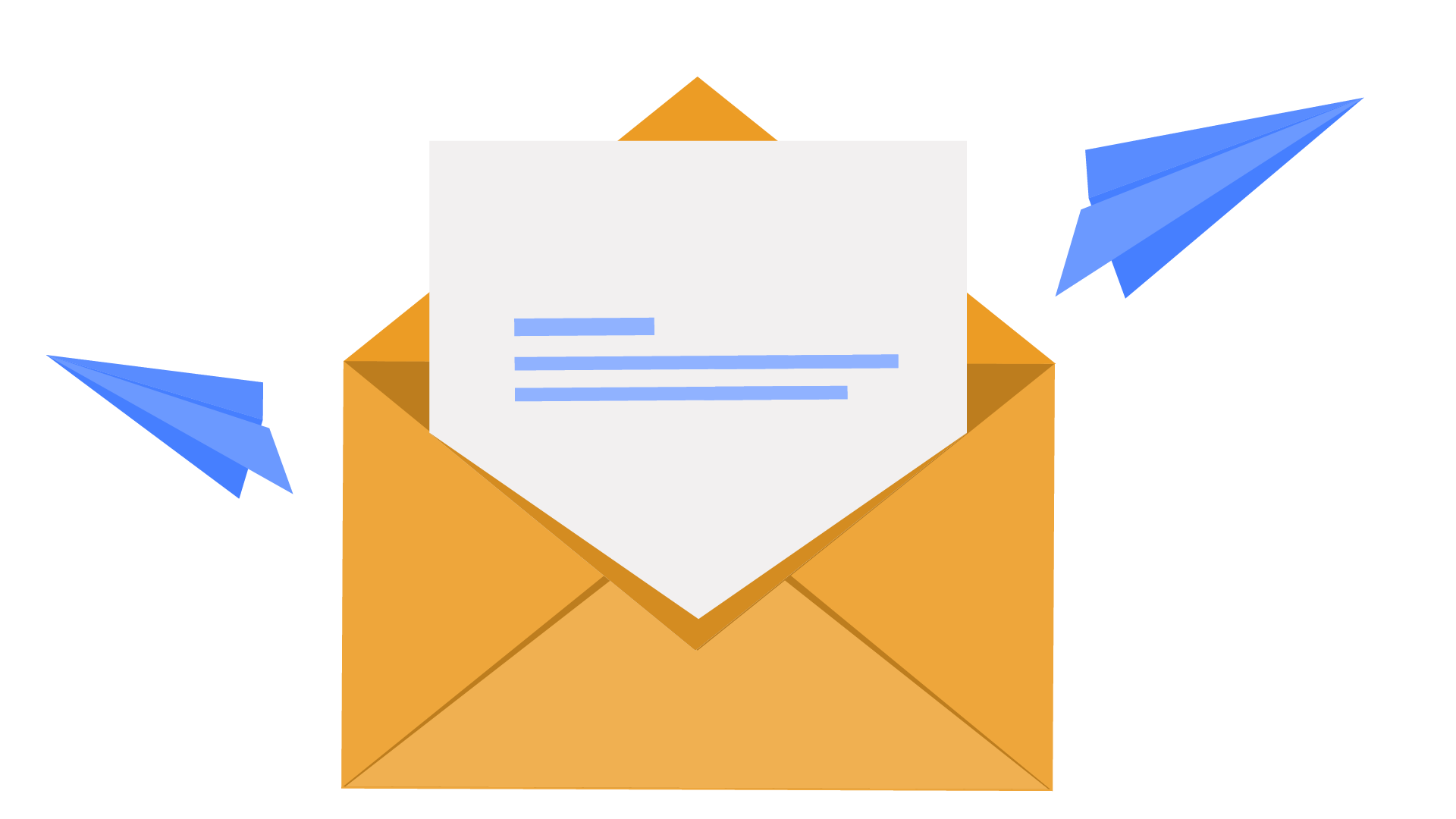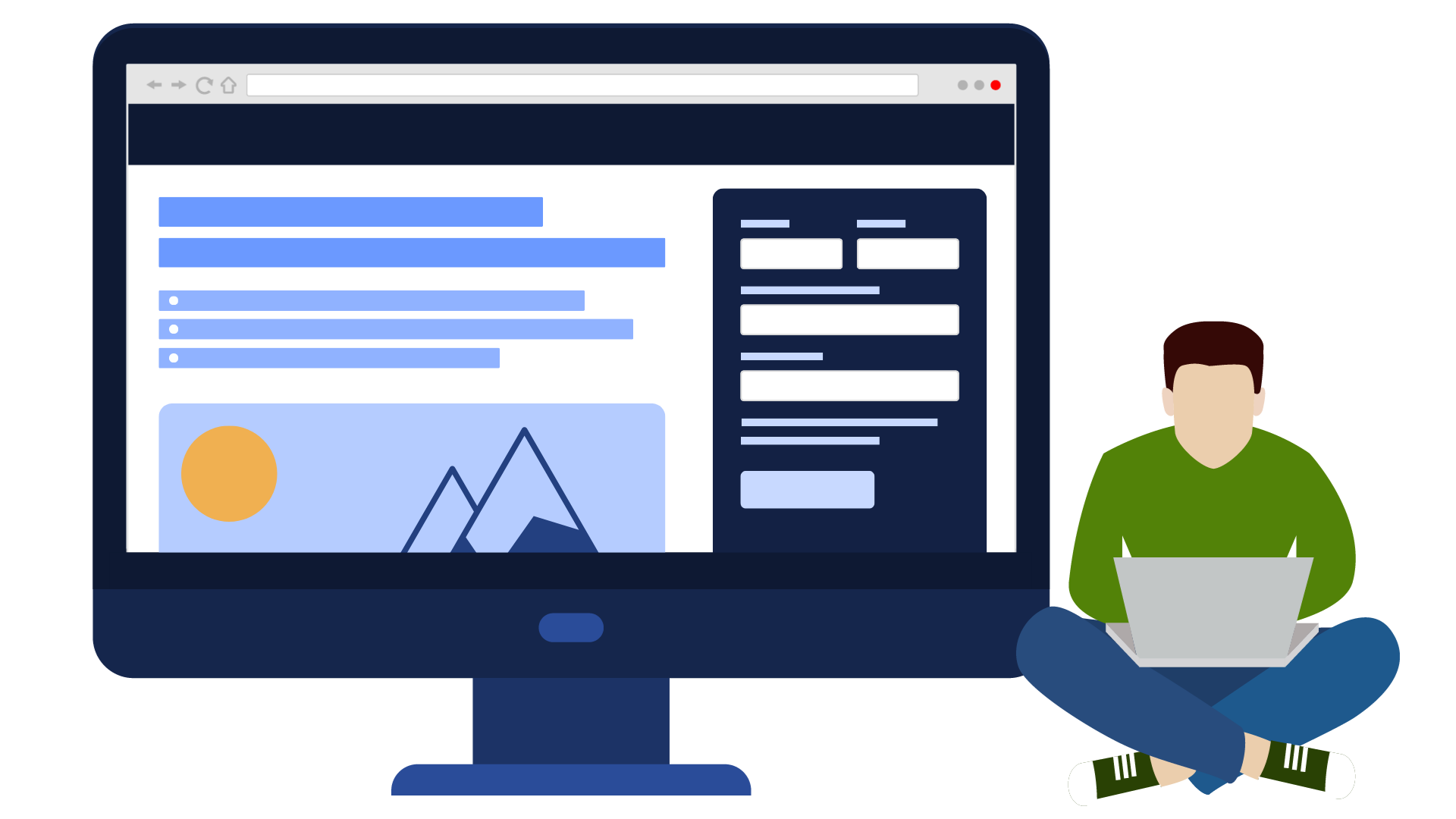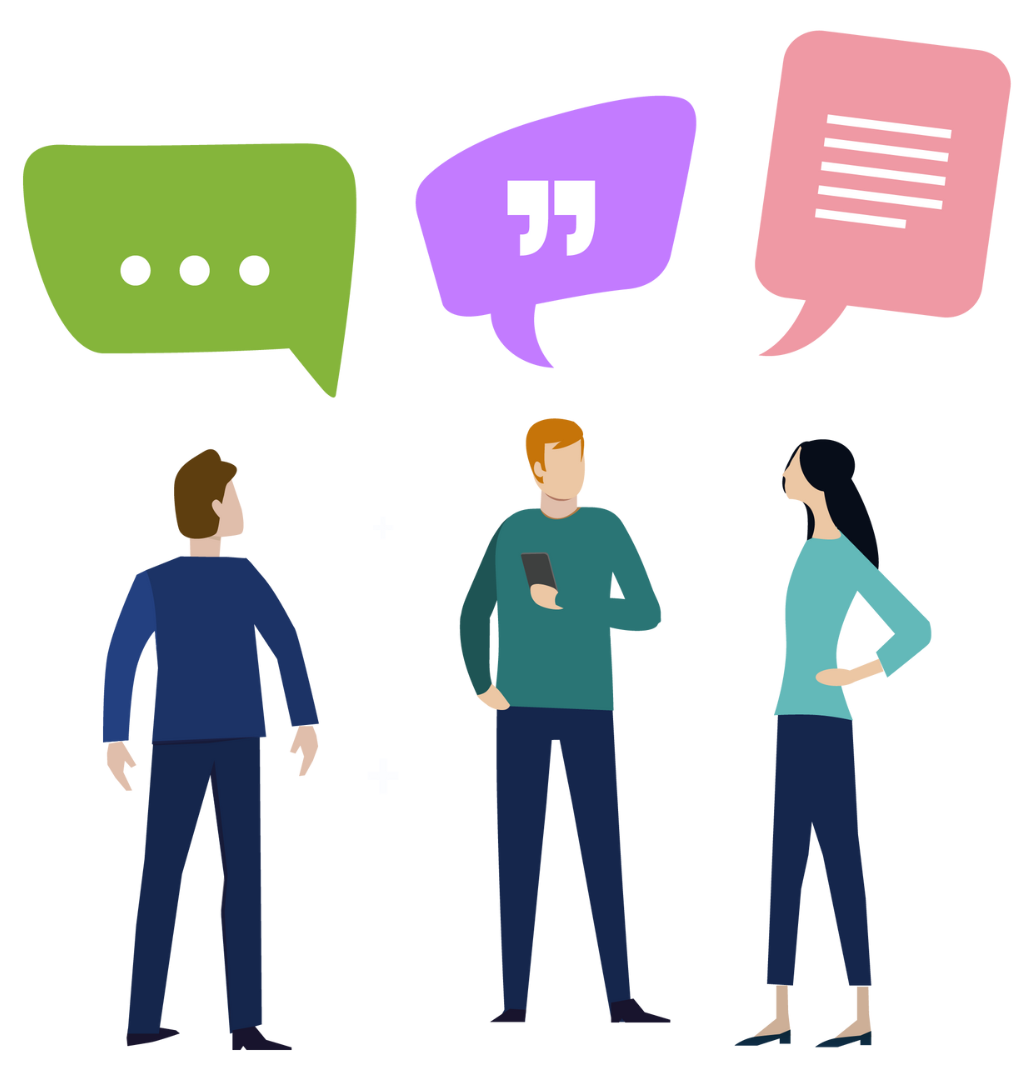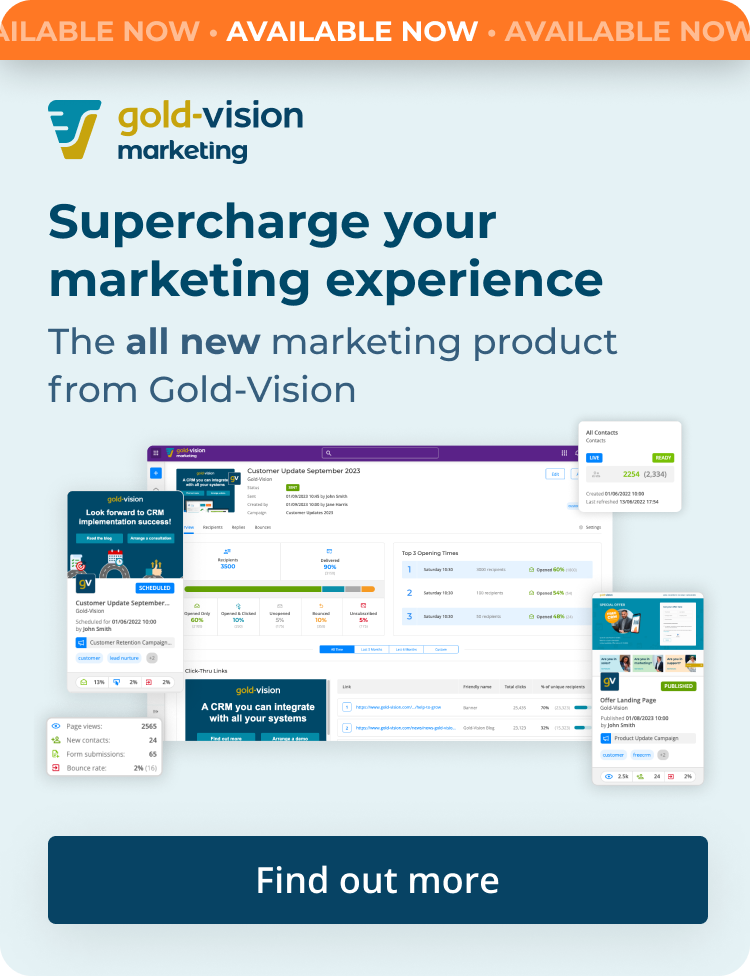Take the buyer’s journey to the next level
It’s time to move away from the ‘one size fits all’ approach when it comes to the buyer’s journey. As individuals, we have personal preferences on absolutely everything we come across in our day-to-day lives, and it’s the same for the leads you’re trying to capture and nurture. The issue we come up against as marketers is that we can’t personalise absolutely everything to suit individuals… But we can do the second-best thing – segregate our pool of leads into target groups.
The first thing you need to do is just that, identify key groups of leads. You should start with defining around 4 target markets basing them on what makes most sense to your business. You could define groups by profession, industry, needs, location, lifestyle – the list is endless.
Once you have these groups set in stone, the next step is to start creating a buyer persona for each. Having a persona helps you visualise the kind of person you will be contacting, and gain a better understanding of their preferences, pain points and needs. Later down the line, these personas will help you to create more personalised content and can even be utilised by other teams in your business.
How to create a buyer persona
From our own experiences here at Gold-Vision, we’ve found that the best way to build accurate buyer personas is to get as many different customer-facing departments involved as possible. This will give you different perspectives and better insights from those who work closer with the customer. We also use data stored within our CRM to inform our decisions and prioritise which 4 we want to start with, based on customer success rates and previous engagement.
TOP TIP: Once you have decided your panel of persona builders, book in a dedicated workshop to work through each persona and create their profile. Before you start, we recommend finding a stock image and giving your persona a name to help you visualise a more detailed personality. We found This Person Does Not Exist really handy for this!
For each one, you should aim to fill in details around each of the following headings:
- Personal details – including job title, age, highest level of education, which social networks they use, location and family status. You could try writing this section as a biography to add a bit more detail!
- Job and career details – the industry they work in, organisation size and income level.
- Preferred method of communication
- Job responsibilities – who do they report to, and who reports to them?
- Tools they need to do their job
- How they measure the success of their job
- Goals and objectives – both personal and professional
- The biggest challenges they face at work (pain points)
- Communication – channels, preferred content types and formats, what content themes and topics they’re interested in
- Their role in the buying process and factors that influence their buying decisions
Download the Buyer Persona template here!
It’s time to map your content
Now that your buyer personas have been created, it’s time to create a content strategy for each of them! It’s easy to fall into the trap of creating a table with the three buyer stages, filled with loads of content and communication ideas, but there needs to be progression within the stages to lead them to the next.
Awareness
In the awareness stage you must presume that your leads are cold. They may have never heard of your business, and not realise that your product or service is something they need.
One of the best ways to reach out to fresh leads is with an email campaign. Your first communication needs to be a welcoming introduction of your business and its values. Don’t forget to use language and jargon that’s appropriate to the buyer persona!
You don’t want to go in for a hard sell at this point, so consider offering your leads something of value in return for opening your email. This could be a resource, such as a blog, infographic or eBook, or a key piece of information that they can take away and use in their day-to-day role. Consider making this type of outreach a series, it will help to warm up your leads, build brand awareness and may even make the recipient think of you as a thought leader in your area of expertise. Some examples of series types include industry orientated outreach, introductions to your business and products/services, or it could be based on your buyer personas pain points.
DON’T FORGET: Include contact preferences and unsubscribe links in your emails, it’s a GDPR requirement! It’s also helpful for you to gauge what’s working, and what isn’t.
Consideration
At this point, the leads who have been through your awareness campaign series will be familiar with the brand. This is the stage at which your content should transition over to more of a focus on your product features and their benefits, as leads may be considering a purchase! Now that the lead trusts you as a brand, they need to know what you can offer them. This is where your buyer personas should be closely referred to! You want to really tap into the issues that are faced by the persona, and the solutions you can provide.
This is also the stage where your leads may start doing some research off their own back. In preparation for this, it’s worth looking at your website and considering where you could make some improvements. Some key areas include:
- Navigation – Is your website easy to navigate? Do you have good search functionality? Does it follow the Web Content Accessibility Guidelines (AKA WCAG)?
- Up-to-date information – Is your product or service information still valid? Is the pricing information correct?
- Benefits – When explaining the features of your product or service, are they benefit led with the user in mind
- Content – Do you have resources available that suit an array of target markets and buyer stages? Do you have customer testimonials backing up your claims?
- Contact – Are your contact details up-to-date? Are they easy to find on your website? Do you have live chat functionality available?
Your website should act as a hub of information for your leads and should work to continue to nurture them through the buyer’s journey. But there also comes the point towards the end of the consideration stage where leads may be ready to start having some 1:1 conversations with your sales team. This makes your ‘contact us’ page a key focus, along with any other conversion points you may have available.
Decision making
The decision-making stage is the point at which your leads are likely to transition from an MQL to an SQL. But this doesn’t mean that your job as a marketer is done!
Leads who have made it to this stage will most likely be having regular conversations with your sales team. They will also be having discussions internally to decide whether it’s a product or service they want to go ahead with. It’s important to acknowledge that in most B2B purchasing scenarios there is a sign-off process, and it is likely to be a group decision – making it a lot more complicated than a B2C transaction.
The best way for marketing to support sales during this process, is to prepare materials for the sales team to distribute. This might include sales proposal templates, links to content that’s appropriate for the decision maker and any other resources that can help the initial lead convince the rest of their board. Examples of these resources include specification sheets, case studies or customer stories, product pages, pricing pages and comparison tools. These need to be easy to find for the decision-making board, otherwise it could become sale-closing barrier.
Distributing your content effectively
There are multiple ways to distribute the content you have created for each of the stages in the buyer’s journey. Here are some examples of ones we’ve found to be more effective than others:
Email marketing & automation
Email marketing can be a great way to kick off your awareness campaigns, especially when you bring automation into it. You could setup a simple automation which sends emails out to the same group of recipients on a regular basis. This will keep your communication consistent and reduces the amount of time spent manually sending emails.
You can also take your automation to the next level, making your communication more personalised to your recipients’ interests. We recommend setting up link-click based automations which can be set-up to serve similar content in the next email sent.
Social media marketing
It’s more difficult to target specific markets on organic social media, but it’s well worth posting your campaign content regularly. It is a great way to spread brand awareness and again, as mentioned previously, offers value. Offering your followers helpful insights and information will lead them to consider you a thought leader in the area. This makes them more likely to remember you if they’re ever in need of the product your business sells.
TOP TIP: If you want to target specific markets on social media, try running paid ads or using boosted posts. Both of these options allow you to select specific demographics and serve them specific content of your choice. You should also consider formatting your content to best suit the channel you’re posting it to. For example, if it’s for Instagram, use a 1:1 image ratio. If you’re sharing an infographic on LinkedIn, try breaking it down into a PDF.
Check, analyse, repeat
Buyer behaviours are changing all the time, so it’s important to regularly check that your buyer personas are still relevant, and that your content is updated accordingly. As mentioned at the very beginning of the blog, although you started with 4 target markets, this should be added to and built upon as an ongoing project. The more granular you are, and the more personalised content that’s created, the better your chances are of leads making it through the entire buyer’s journey!

